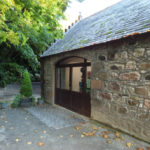Glen Grant Distillery
[dropcap]T[/dropcap]he Glen Grant Distillery was founded by James Grant who in 1820 helped lead the “Raid on Elgin”, the last clan revolt in Scottish history. Legend has it that the men of the Grant Clan were furious at the news that their chief and his family were practically under house arrest by the people of the Elgin lowlands. James Grant marched among his 700 clansmen wearing an 1819 Wilsons of Bannockburn tartan waistcoat, today proudly on display at the distillery.
In 1840 brothers John and James Grant applied for a distillery license. With the sea and the port of Garmouth nearby, the River Spey to the south, and surrounded by barley-growing plains, all the basic ingredients for malt whisky were close at hand.
Grant was also heavily involved in the construction of the first Northern railroad; as a result, in 1851 one of the locomotives on the Lossimouth-Elgin-Rothes line was named Glen Grant.
By 1872, James “The Major” Grant, inherited the distillery. A legendary inventor, socialiser, and traveller, “The Major”, was fascinated by new ideas and wasn’t afraid to explore them. He was the first man in the Highlands to own a car. Glen Grant was the first distillery to have electric light, and he introduced the tall slender sills and purifiers which created the fresh malty flavour and the clear colour that defines the whisky to this day.
The famous Scottish violinist Scott Skinner (1843-1927) composed music for the violin as a tribute to the Glen Grant distillery and its Malt Whisky. The Strathspey (a lively Scottish dance) entitled “Glen Grant” was composed on 24 April 1909.
Today the distillery is owned by Allied Domecq and welcomes visitors looking to learn more about the distilleries history and sample its ranges.
The distillery also has an excellent garden which has been restored and should not be missed.







